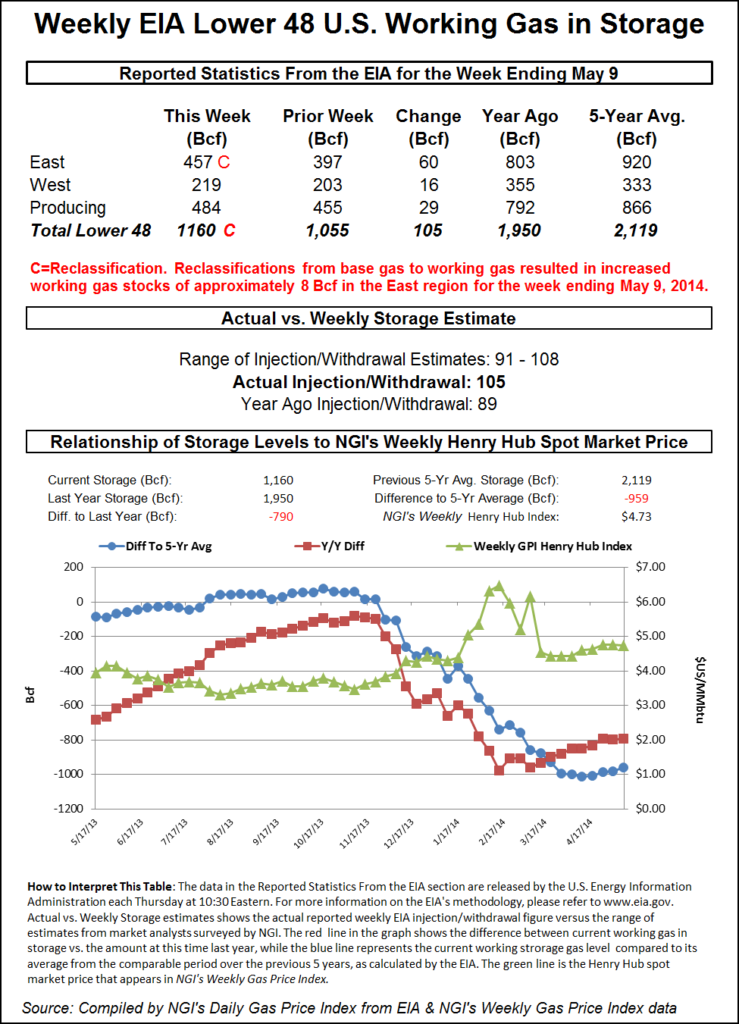Natural Gas Futures Extend Earlier Rally After EIA Storage Build Falls Short of Consensus
The U.S. Energy Information Administration (EIA) reported a 103 Bcf injection into storage inventories for the week ending May 8, coming in slightly below consensus and providing some further uplift to natural gas futures, which had started off Thursday on slightly higher ground.

In the minutes leading up to the report, the June Nymex gas futures contract was trading 5.3 cents higher day/day at $1.669/MMBtu. Once the print hit the screen, the prompt month ticked up a few more notches to $1.673. By 11 a.m. ET, it was trading at $1.685, up 6.9 cents from Wednesday’s close.
Bespoke Weather Services, which had projected a 105 Bcf injection, viewed the EIA report as “pretty neutral” given market expectations but said the figure once again confirms “very loose” supply/demand balances. The firm continues to search for “meaningful tightening that would finally give some support to the front of the curve in terms of allowing a sustainable rally.”
Ahead of the report, a Bloomberg survey of eight market analysts showed injection estimates ranging from 100 Bcf to 112 Bcf, with a median build of 107 Bcf. A Reuters poll of 19 analysts produced a wider range of 98 Bcf to 115 Bcf, while NGI projected a 113 Bcf injection.
The 103 Bcf build compares with last year’s 100 Bcf build and the five-year average build of 85 Bcf, according to EIA.
Broken down by region, the South Central region continued to lead with a 32 Bcf injection, which included a 24 Bcf build into nonsalt facilities and a 9 Bcf build in salts, EIA said.
Despite posting the largest injection across the Lower 48, market observers on The Desk’s online energy platform Enelyst.com said the injection was several Bcf lower than they had expected, especially given that liquefied natural gas demand was flat week/week and cooling demand has yet to gain momentum in the South Central region.
Elsewhere, the East added 28 Bcf to stocks, and the Midwest added 24 Bcf. Pacific inventories rose by 12 Bcf, while Mountain stocks climbed 6 Bcf, according to EIA.
Total working gas in storage as of May 8 was 2,422 Bcf, 799 Bcf above year-ago levels and 413 Bcf above the five-year average, EIA said.
© 2024 Natural Gas Intelligence. All rights reserved.
ISSN © 1532-1231 | ISSN © 2577-9877 |
